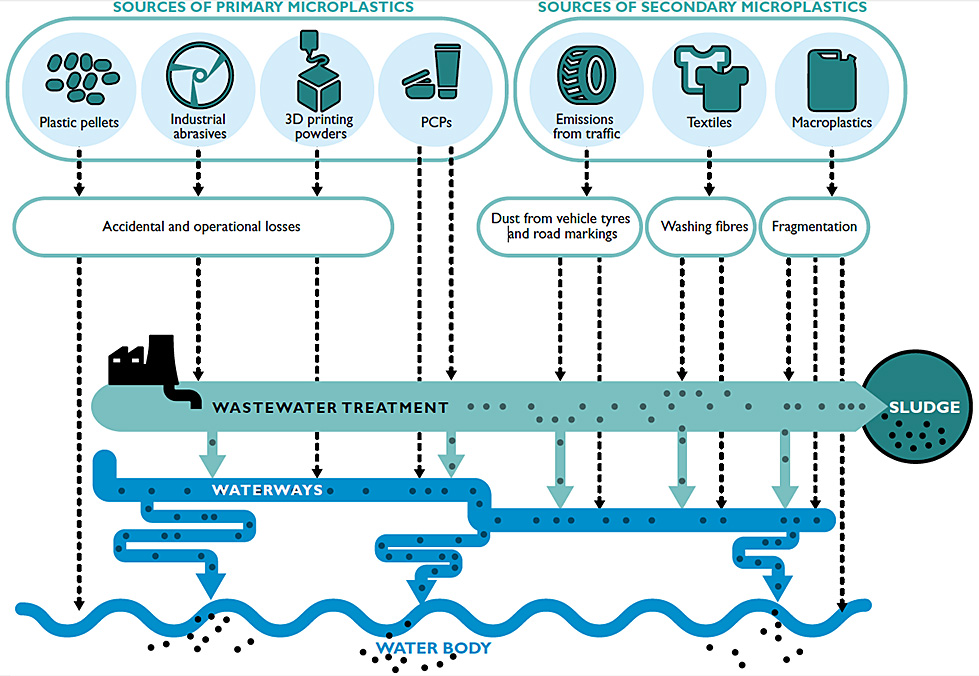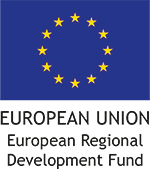![]()
Pathways and trasport mechanisms
Beach litter studies Turku pilot study
Pathways and transport mechanisms
Marine litter can be transported by different mechanisms from distant areas: via rivers or washed by runoff from inland, transported by animals, driven by winds and by sea currents.
Besides rivers, also other land-based waterways: especially storm waters are potentially transporting litter items to the sea. Presently methods for assessing riverine transport of marine litter are still in a phase of development, and have focused on macrolitter. The survey methods include visual monitoring, usually from a bridge crossing the river, counting litter items from river banks, collecting floating litter by surface booms or bottom nets. Also other methods, such as fixed littercams or drones have been applied. One of the tasks of BLASTIC is to develop guidance for monitoring riverine litter. As a part of this task actual monitoring was carried out in all four countries. Experiences of this joint monitoring campaign will be available on BLASTIC website in autumn 2018.
Some litter items can have a number of potential sources and pathways as well as geographic origin: plastic bottles can be left on local beach, thrown overboard from merchant ship or washed into the sea from distant inland town. Determining the origins and pathways of microplastics is especially challenging task. See Land-based sources table 2.

Figure 2. Land-based sources of microplastics and their pathways (Source: SYKE policy brief 2017; modified from the original by P.J. Kershaw).
In marine environment the litter can end up on shoreline, water surface, water column, and seafloor, and can be ingested by animals and/or damage them with serious consequences. Many types of plastics are denser than seawater and sink in the sea floor, so much of the plastic litter remain out of human sight. Also less dense particles tend to sink with time when they are covered with a biofilm of microbes and other marine organisms.
Beach litter studies
Beach litter surveys are presently the most evolved method for monitoring the amount of litter accumulating in marine environment. The monitoring and cleaning of shorelines is commonly done by volunteers under the supervision of experts, like expertized NGOs. After the data is quality ensured, it is used to produce national, regional and later on also European wide assessments on the amount and type of litter on European marine environment. Nowadays almost all European countries have started to monitor macro (>2.5 cm) litter on beaches.
In the central Baltic Sea region common beach survey methods were developed and launched during an EU-funded project (MARLIN 2013) between Sweden, Estonia, Latvia and Finland. The countries adopted and slightly modified the existing UNEP/IOC’s guidelines for assessing marine litter on beaches. There are, however also other methods for data collection and categorization available, which are widely being used, and some of them have a much longer history of being implemented). Besides differences between the different methodologies, work is presently going on between marine experts from European member in states to develop common approach for beach litter assessments.
While a large proportion of beach litter cannot be identified, a part of the items can be identified enabling to perform source analyses. A necessity is become familiar enough with the local conditions of each study beach. Consultation with local authorities and other stakeholders is crucial. Based on all available data it is possible to assess probabilities for potential sources for beach litter.
Turku pilot study: How to combat cost-effectively marine litter?
The pilot study (BLASTIC/L. Saikkonen, 2018) focused on cost-effective measures to reduce urban plastic litter originating from land. All available data sources were used, including consultation of local authorities and other stakeholders. The used cost-effective optimization framework was designed to take better into account the special characteristics of marine litter such as origin from multiple sources and joint measure impacts resulting from the stages along the marine litter pathway.
In the Turku study the data was collected from Ruissalo, located 3 kilometers from the centre, by a beach litter survey for six years (2012–2017). The city of Turku has about 189 thousands inhabitants and a long coastline. The river Aura dives the city center in two parts and a port and several marinas are located in the city or its vicinity. Turku is frequently visited by tourists especially during the summer time: it hosts festivals taking place near the river or coast. The focus of the pilot study was on marine plastics > 2.5 cm which were recognizable.
Cigarette remains were the most common recognizable litter type forming 16.9% of all litter, the remains of food and drink packaging formed 18%, and strapping, packaging and insulation material formed 5 %. Plastics bags cover 1.5 % of all litter. Most of the littering could be linked to tourism and recreation activities (40.3%), followed by to urban runoff (23.3%) including storm water and river runoff. Third land-based source was construction industry (5.5%; strapping, packaging and insulation).
The percentage litter reduction measures were categorized based on the stages of the litter pathway and they were targeted at: litter production, waste management, preventing land litter entering the waterways, removal of litter from waterways and the marine environment. The study showed that the pathways of marine litter should be identified carefully for each litter type, before conducting cost-effective analyses for litter reduction measures. The result of the study accords with the earlier studies that marine litter education and awareness campaigns are among the most effective ways to reduce marine litter.

